by Sonam Srivastava
Published On Dec. 31, 2023
2024 is going to be a pivotal year in many regards. Economic policies are evolving, technological breakthroughs are coming at breakneck speed, and market dynamics are also shifting.
In this yearender post, we delve into the intricacies of the upcoming year's financial outlook, key themes, sectors poised for growth, areas warranting caution, and potential risks. This is a guide to navigate the complexities of the global markets in 2024, offering insights that blend macroeconomic trends with sector-specific analysis.
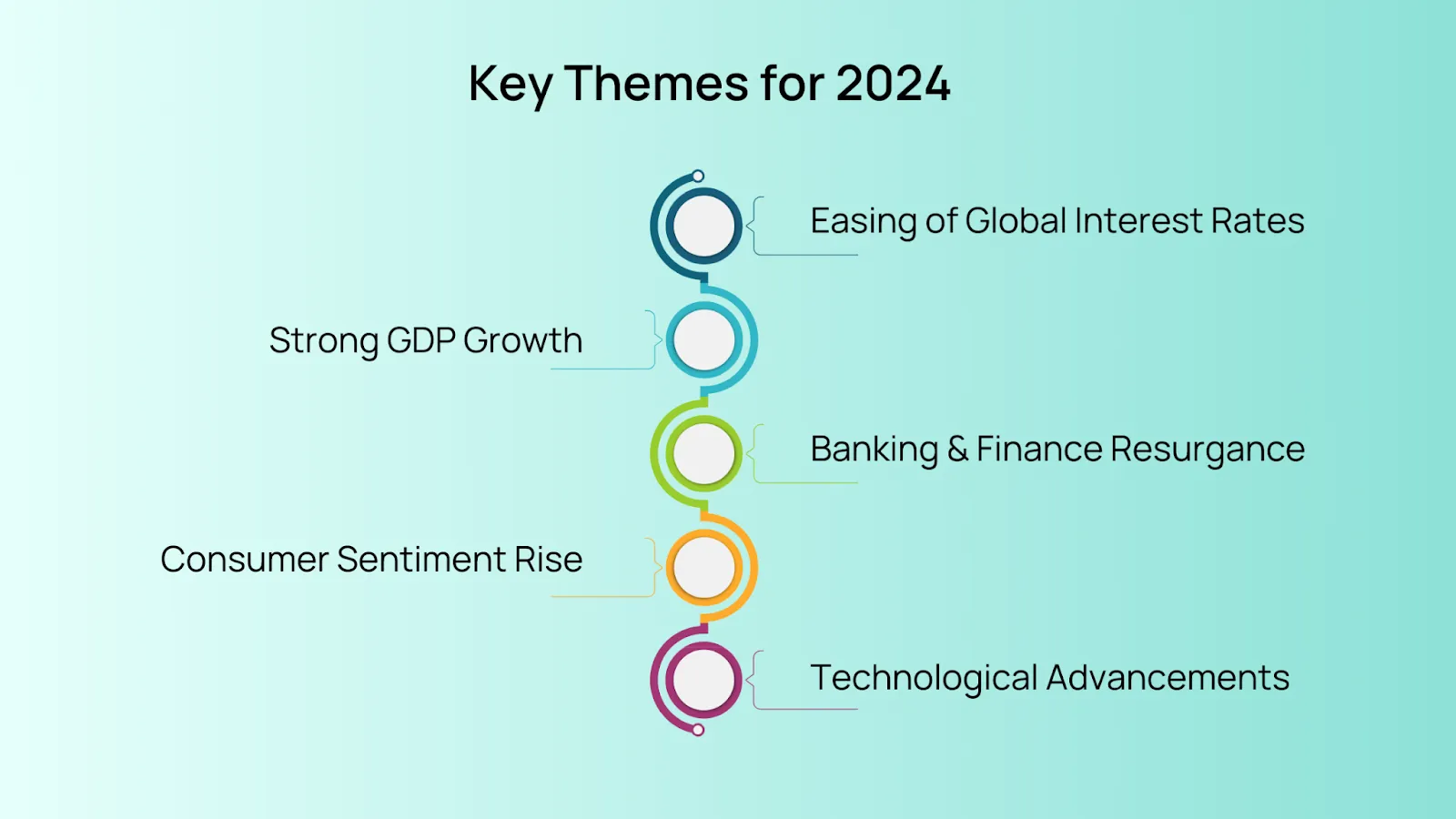
The year 2024 is expected to see a shift from the aggressive rate hikes of the past to a gradual easing of global interest rates. This anticipated change could rejuvenate economic activities across various sectors, creating a more favourable investment climate. Investors might witness improved market liquidity and increased spending, which could stimulate growth in several industries. Excess liquidity means foreign money flow into the emerging economies like India and resurgence of market sentiment. Large cap stocks gain the most when foreign investors come in and after the large cap rally small and mid caps pick up.
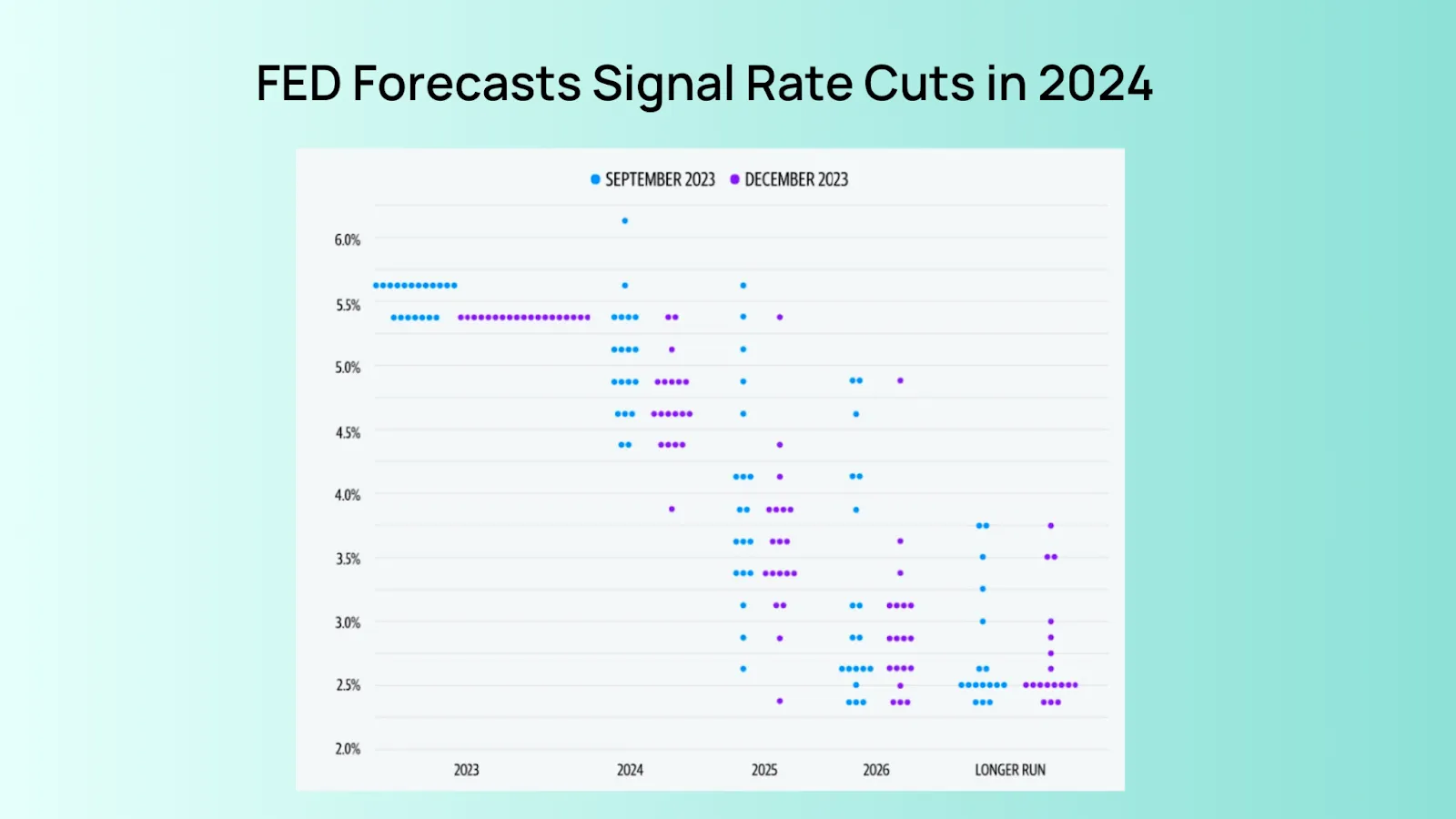
The recent uplift in India's economic outlook for 2023-24, marked by raised expectations and a wave of optimism, is a response to the country's stronger-than-anticipated performance in the second quarter of the fiscal year. Official data revealed a remarkable 7.6% growth, surpassing the consensus estimate of around 6.8%. This positive surprise has led various agencies to revise their growth forecasts upwards, reflecting confidence in India's economic trajectory.
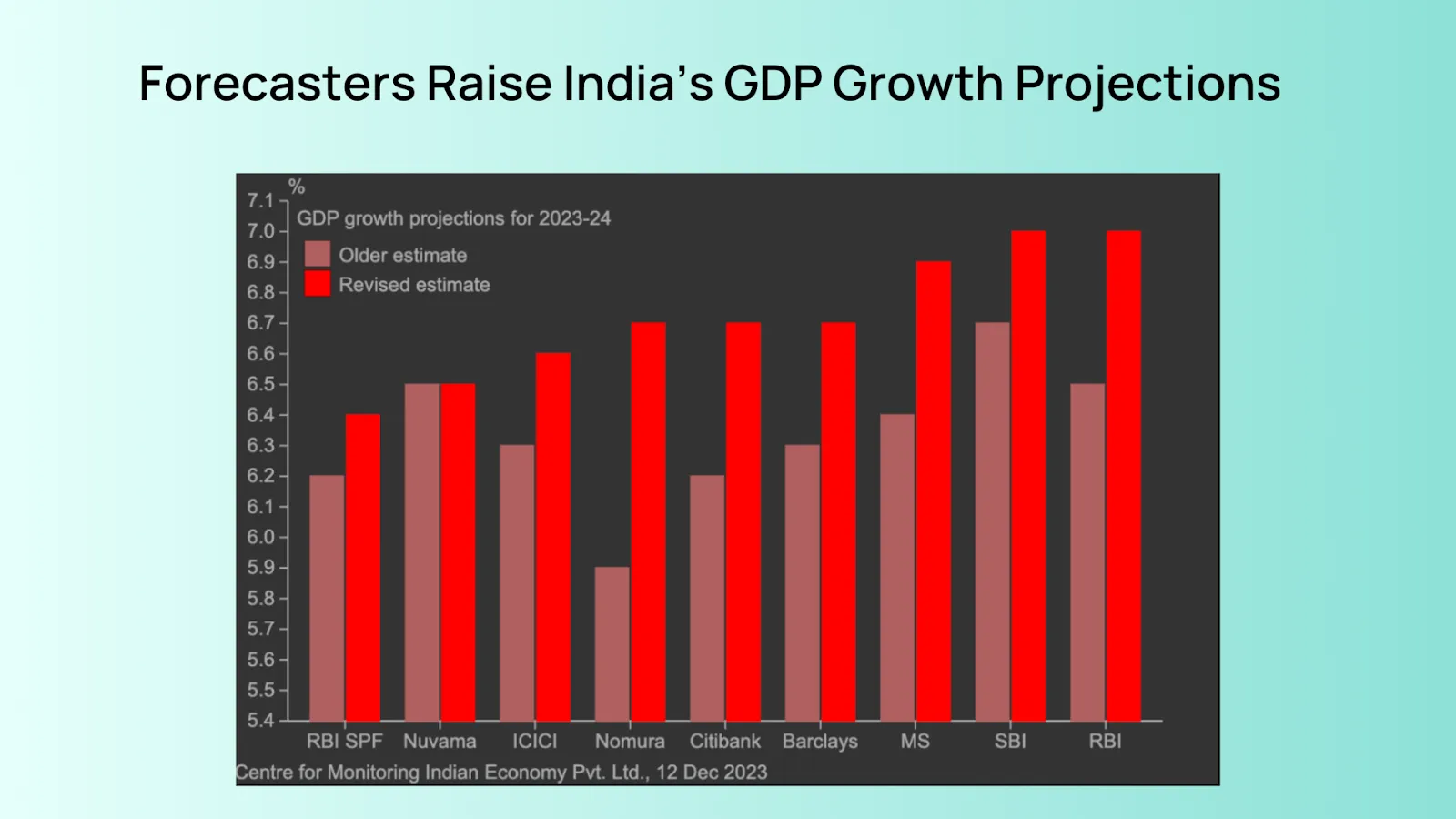
The banking and financial sectors are expected to experience robust growth, driven by an expansion in credit and healthier balance sheets. This resurgence is likely a result of improved economic conditions, regulatory reforms, and technological advancements in financial services.
In November 2023, non-food credit excluding the HDFC merger showed a robust growth of 1.2% month-on-month and 16.3% year-on-year. Key growth drivers were agriculture (18.2% YoY), services (21.9% YoY), and retail loans (18.6% YoY). The services sector's growth was led by 'other services' and commercial real estate, while the retail sector saw strong growth in vehicle loans and consumer durables. Corporate lending remained steady, with medium industries and MSMEs showing moderate growth.
Rising income levels and evolving consumer preferences are set to boost the consumer discretionary sector, including luxury goods. This shift indicates a growing middle class and an appetite for higher-quality, premium products, which could reshape consumer markets and drive economic growth.
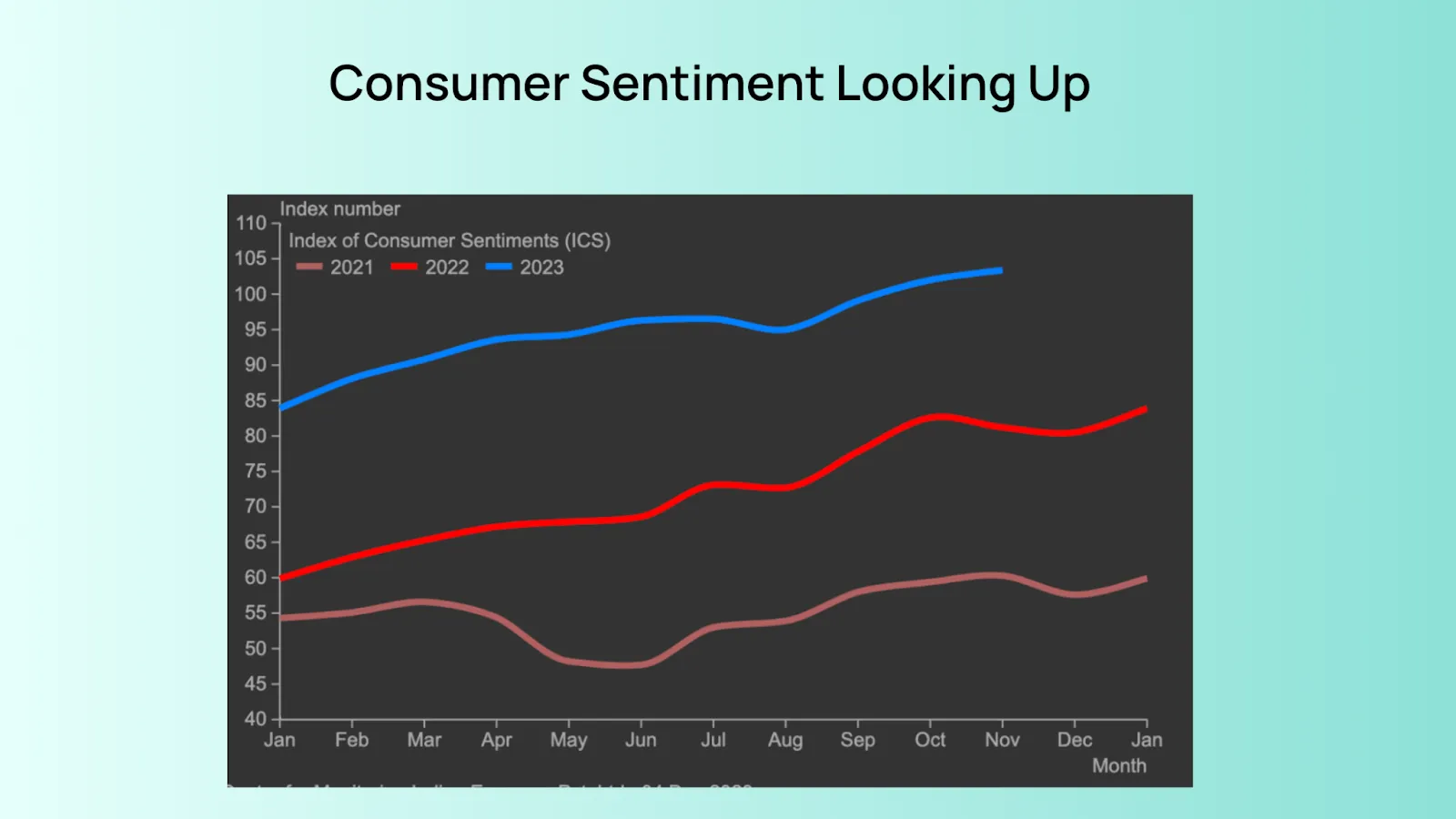
Technology remains a central theme, with advancements in AI and digital transformation continuing to reshape industries. This trend underscores the importance of innovation and adaptability in staying competitive, with significant implications for sectors like healthcare, finance, and manufacturing.
The shift towards renewable energy and sustainable solutions is expected to gain further momentum, aligning with global efforts to combat climate change. This trend not only represents a shift in energy production but also opens up new investment opportunities in green technologies and sustainable practices.
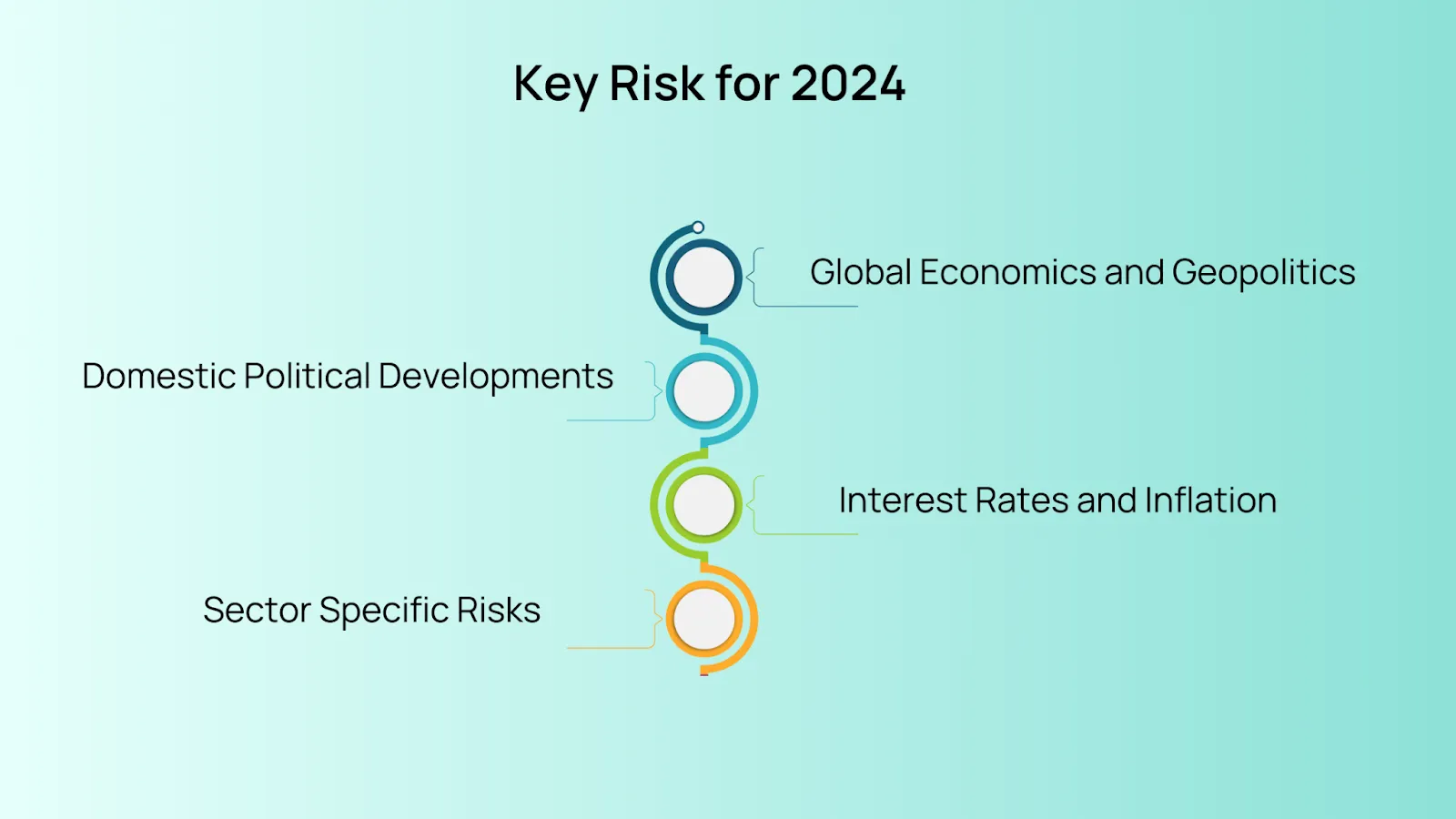
In 2024, global economic and geopolitical uncertainties could significantly impact markets. Geopolitical tensions can affect sectors like defense, energy, and commodities. For example, conflicts can increase defense spending and disrupt global energy supplies, influencing energy prices. Economic uncertainties, such as shifts in major economies or international trade relations, can also lead to market instability. Investors should be aware of how international events can affect different sectors and geographies.
Political developments, especially around election periods, can impact market sentiment and economic policies. Elections bring uncertainty regarding policy continuity and government spending priorities. Sectors such as infrastructure and public enterprises might be sensitive to political changes. Policies favoring market liberalization can boost investor confidence, while protectionist measures might have the opposite effect. Investors should be mindful of political events and their potential market impact.
Central bank policies regarding interest rates and inflation will be crucial in 2024. Lower interest rates typically boost borrowing and spending, benefiting sectors like real estate and consumer discretionary. However, persistent high inflation might compel central banks to maintain or increase rates, potentially dampening economic growth. Investors need to monitor inflation trends and central bank policies, as they will significantly influence market dynamics.
Each sector faces unique challenges that could impact investment outcomes. Regulatory changes can alter the landscape for industries like healthcare, technology, and finance. Technological advancements present opportunities and risks, especially for companies that fail to adapt. Environmental regulations could impact sectors like energy and manufacturing. Investors should consider these risks, including regulatory disruptions and technological changes, in their decision-making.
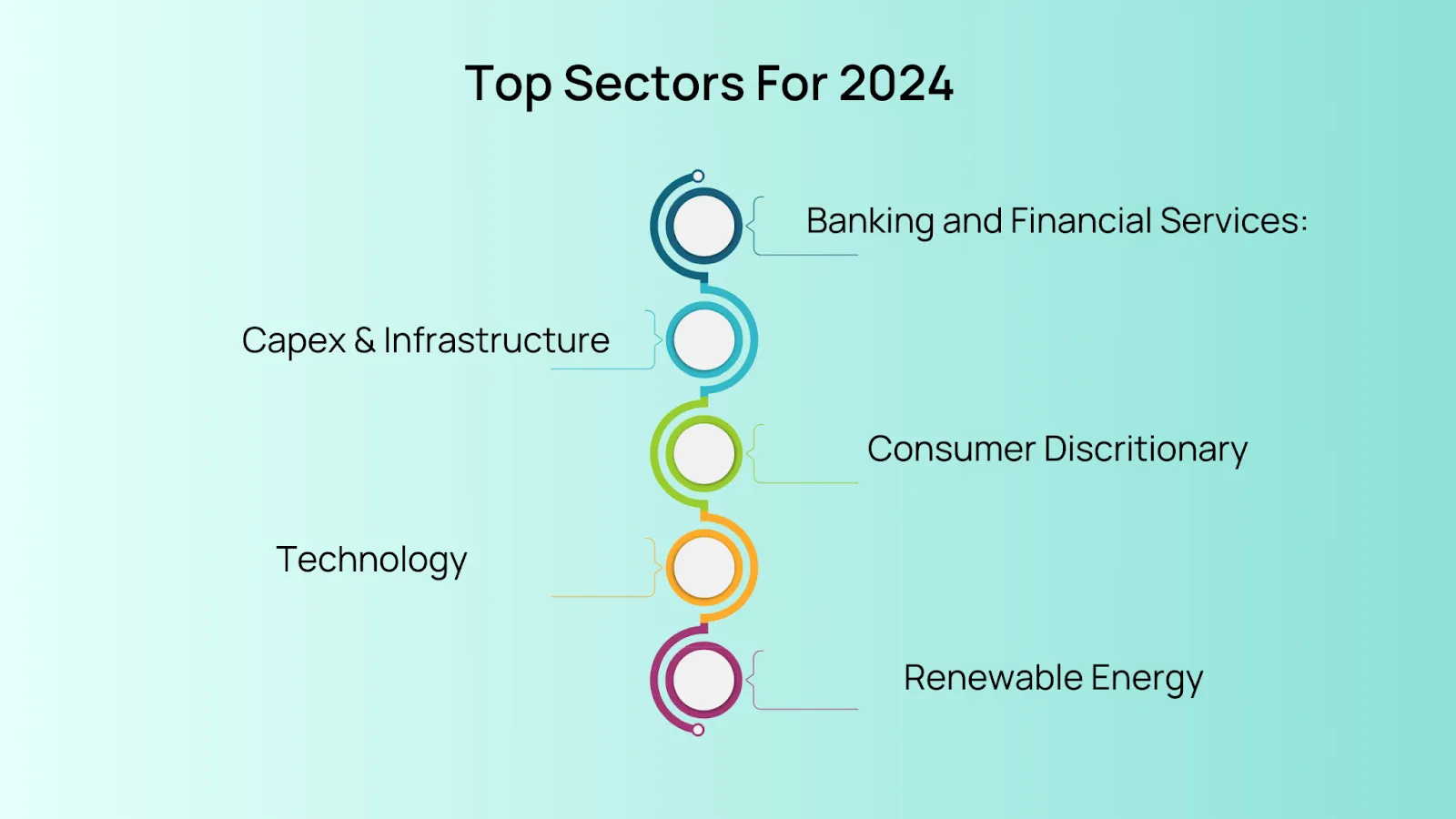
The banking and financial services sector is poised for substantial growth in 2024, driven largely by an expansion in credit and improvements in balance sheets. Large banks and non-banking financial companies (NBFCs) are particularly well-positioned to benefit from these trends. Improved economic conditions, coupled with technological advancements in financial services, are expected to enhance operational efficiency and customer outreach. This sector's growth is indicative of a broader economic recovery and could be a key driver of market performance.
Significant growth is anticipated in sectors linked to capital expenditure, such as infrastructure, defense, and railways. This growth trajectory is expected to be fueled by both government spending initiatives and private investments. These sectors are likely to benefit from a broader economic recovery and modernization efforts, reflecting a commitment to enhancing national infrastructure and defense capabilities, which in turn could stimulate job creation and economic activity.
The consumer discretionary sector, including luxury goods, is set to experience a boost, driven by rising income levels and evolving consumer preferences. This trend suggests a growing middle class with an increasing appetite for high-quality, premium products. The shift towards luxury and discretionary spending could reshape consumer markets, driving growth in industries ranging from retail to high-end consumer services.
The technology sector is expected to maintain its strong growth trajectory, particularly in areas like artificial intelligence (AI) and digital transformation. Companies at the forefront of these innovations are likely to present lucrative investment opportunities. This sector's growth underscores the increasing importance of technology in driving business efficiency, innovation, and opening new market opportunities.
With a growing global emphasis on sustainability, renewable energy sources are poised to gain significant momentum. This sector's growth is driven by a combination of environmental considerations, technological advancements, and supportive government policies. The shift towards renewable energy reflects a global effort to combat climate change and is likely to spur innovation and investment in green technologies.
The manufacturing sector is expected to see a resurgence, driven by policy initiatives like 'Make in India' and the diversification of global supply chains. This resurgence indicates a shift towards more domestic production and a move away from traditional manufacturing hubs, potentially leading to job creation and economic growth.
The real estate sector is projected to continue its upward trajectory, supported by factors like urbanization, economic expansion, and evolving lifestyle preferences. This growth reflects broader economic trends and the evolving needs of a growing population, making it a sector to watch.
The FMCG and rural-oriented sectors are expected to benefit from a recovery in rural demand. This recovery is crucial for driving broader economic growth and reflects the potential of rural markets. The growth in these sectors could be indicative of increased rural spending power and a shift in consumption patterns.
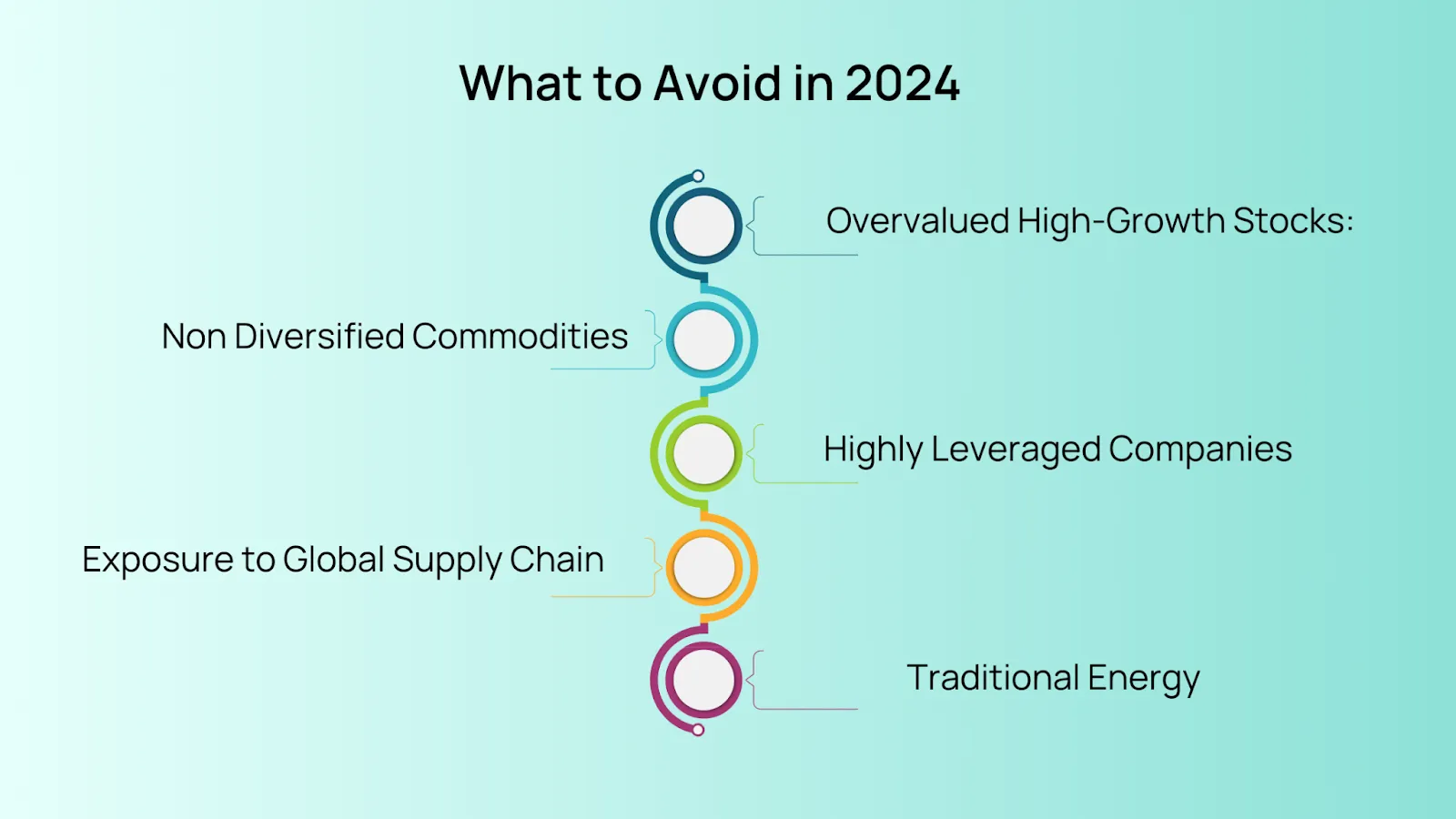
Investors should exercise caution in sectors where valuations far exceed fundamental worth, particularly in tech and high-growth stocks. These sectors have witnessed significant investor interest, leading to inflated valuations. However, such overvaluation poses risks of market corrections as these stocks may not sustain their high prices in the absence of corresponding earnings growth. It's crucial to assess whether these high valuations are supported by robust business models and future earnings potential.
The commodities market, known for its volatility, can be significantly impacted by global economic shifts and geopolitical events. Investing in commodities without a diversified approach can expose investors to high risk. For instance, reliance on a single commodity or a narrow range of commodities can lead to substantial losses if that particular market faces downturns. Diversification across various commodities or including commodities as part of a broader, diversified portfolio can mitigate these risks.
Companies with high debt levels could face challenges, particularly if the global interest rate environment changes. Rising interest rates increase the cost of servicing debt, which can impact profitability and cash flow. This is especially pertinent for companies that have taken on substantial debt during periods of low interest rates. Investors should scrutinize the debt levels and the ability of companies to manage their debt in a changing economic landscape.
Industries reliant on global supply chains may continue to face challenges if disruptions persist. These disruptions can lead to increased costs, delays, and reduced efficiency, impacting profitability. Sectors like manufacturing, retail, and technology, which depend heavily on global supply chains, might be particularly vulnerable. Investors should consider the resilience and adaptability of companies in managing supply chain challenges.
While the energy sector, including renewable energy, is expected to grow, traditional energy stocks, such as those in oil and gas, might face challenges. The global shift towards sustainable and renewable energy sources could impact the long-term viability of traditional energy companies. Additionally, if these stocks are overvalued, they might not offer sustainable returns, especially as the world increasingly moves towards cleaner energy solutions. Investors should be cautious and assess the future prospects of traditional energy investments in the context of global energy transitions.
The year 2024 presents a tapestry of opportunities and challenges in the global investment arena. While the easing of interest rates and advancements in technology and renewable energy herald new growth avenues, investors must tread cautiously, mindful of overvaluations and sector-specific risks. The key to successful investing in this dynamic environment lies in staying informed, diversifying portfolios, and adapting strategies to align with the changing economic landscape. As we embrace the potential of 2024, it is crucial to balance optimism with prudence, ensuring that investment decisions are grounded in thorough research and a clear understanding of emerging trends and risks.
Discover investment portfolios that are designed for maximum returns at low risk.
Learn how we choose the right asset mix for your risk profile across all market conditions.
Get weekly market insights and facts right in your inbox
Get full access by signing up to explore all our tools, portfolios & even start investing right after sign-up.
Oops your are not registered ! let's get started.
Please read these important guidelines
It depicts the actual and verifiable returns generated by the portfolios of SEBI registered entities. Live performance does not include any backtested data or claim and does not guarantee future returns
By proceeding, you understand that investments are subjected to market risks and agree that returns shown on the platform were not used as an advertisement or promotion to influence your investment decisions
Sign-Up Using
A 6 digit OTP has been sent to . Enter it below to proceed.
Enter OTP
Set up a strong password to secure your account.
Skip & use OTP to login to your account.
Your account is ready. Discover the future of investing.

Login to start investing on your perfect portfolio
A 6 digit OTP has been sent to . Enter it below to proceed.
Enter OTP
Login to start investing with your perfect portfolio
Forgot Password ?
A 6 digit OTP has been sent to . Enter it below to proceed.
Enter OTP
Set up a strong password to secure your account.
Your account is ready. Discover the future of investing.

By logging in, you agree to our Terms & Conditions
SEBI Registered Portfolio Manager: INP000007979 , SEBI Registered Investment Advisor: INA100015717


Tell us your investment preferences to find your recommended portfolios.
Choose one option
Choose multiple option
Choose one option
Choose one option
Choose multiple option
/100
Investor Profile Score
Congratulations ! 🎉 on completing your investment preferences.
We have handpicked some portfolios just for you on the basis of investor profile score.
View Recommended Portfolios
on your first subscription


